Carbon Capture is a way of reducing carbon dioxide emissions from oil and gas production to ultimately tackle the looming threat of global warming. Many investors may wonder, what are the best carbon capture stocks to buy now? Here’s a look at some of our favorites.
Best Carbon Capture Stocks Listed
Aker Carbon Capture ASA (OTCMKTS: AKCCF)
Starting off the list is perhaps the purest carbon capture stock on the market today.
Aker is a pure carbon capture company with over 20 years of experience working on carbon capture projects.
Using its technology and operations, it can provide solutions within the field of carbon capture technologies, as well as utilization and storage globally.
Aker’s carbon capture process absorbs CO2 using a mixture of water and organic amine solvents, which it can apply to emissions from various sources, including gas, cement, waste-to-energy, hydrogen, and other process industries.
Carbon capture plants are available under the Just Catch and Big Catch brands, as well as mobile test units.
Current trends show that the price of emitting carbon is rapidly increasing while the cost of capturing emissions is decreasing due to increased deployment over the last few years.
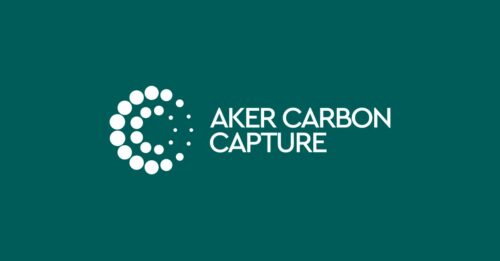
A record-high of close to 200 commercial carbon capture and storage facilities are currently in the project pipeline, as it added 61 new facilities in 2022 alone.
The company has been in the headlines this year, as a chemical company in Germany awarded it a decarbonization study.
Before that, it signed a letter of intent to begin a large carbon capture project to provide two Just Catch units to undisclosed European companies.
Aker made an estimated revenue of $79.13 million in 2022, with experts projecting a 73.34% increase in 2023.
The company was incorporated in 2022 and is currently valued at $765.10 million with a market cap of about $900 million.
Although it does not currently pay a dividend, it has a gross profit margin of 9.19%.
Occidental Petroleum Corporations (NYSE: OXY)
Closely rivaling Aker as a premium carbon capture stock is Occidental Petroleum.
The over 100-year-old oil and gas firm based in Texas is the fifth-largest oil and gas company in the United States.
However, while the US is its main base of operations, It also has subsidiaries in the Middle East, Africa, and Latin America.
Occidental is not a carbon capture company, but its usage of carbon capture technologies makes it an outstanding stock in this space.
Right now, it uses this technology for enhanced oil recovery purposes. However, it recently announced that it would focus its resources on transitioning to the green economy.
The company has shown its commitment to reducing carbon emissions in recent times.
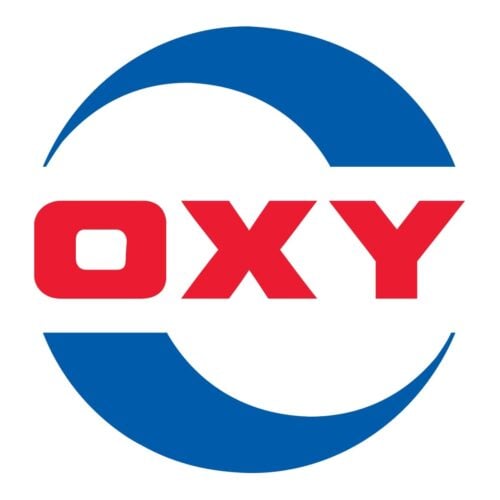
In 2018, it founded Oxy Low Carbon Ventures, a company whose primary purpose is to develop carbon capture utilization, storage, and other technologies to help lower emissions across the industry.
One of the most significant projects of the venture is its direct air capture project called 1PointFive.
According to investors, Occidental Petroleum is increasing its cash flow by divesting from slow-growing assets such as its oil fields.
This will allow it to repurchase stock, pay down debt, or invest in higher-growth shale assets that are more profitable than those it sells.
Occidental Petroleum made an estimated revenue of $36.5 billion in 2022.
Even though experts estimate that figure to reduce by 17% this year, its year-over-year growth of 63.62% leaves investors with little to desire.
The company has a dividend yield of 0.78%, recording annual payouts of $0.52 at a ratio of 4.35%.
Equinor ASA (NYSE: EQNR)
Another oil and gas giant using carbon capture technologies is Equinor ASA.
The energy company based in Norway is involved in producing, refining, and transporting petroleum and petroleum products across the globe.
In addition, Equinor manufactures, processes, and transports oil and gas commodities, including crude and condensate products, gas liquids, natural gas, and liquefied natural gas.
Part of the company’s operations also includes electricity and emission rights, operating refineries, terminals, processing plants, and power plants, as well as developing low-carbon oil and gas solutions.
Equinor developed wind, carbon capture, and storage projects that provide other renewable energy.
It operates in segments: Exploration and Production Norway, Exploration and Production USA, Exploration and Production International, Marketing, Midstream and Processing, Renewables, and Other.
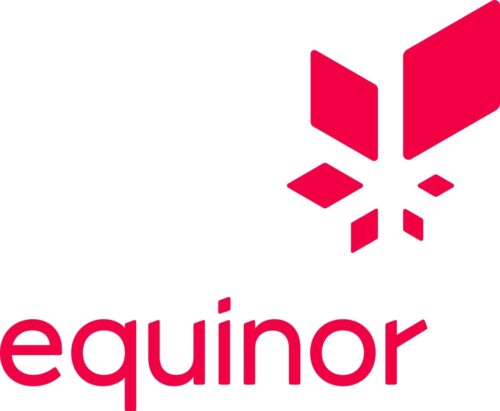
Currently, the company is in agreement with the United States Steel Corporation to study the development of the technologies as it is in line with their focus on the expansion of clean hydrogen and carbon capture and storage.
It also collaborates with infrastructure firm Tallgrass Energy to investigate large-scale hydrogen and ammonia projects in the United States.
It also maintains a partnership with Wintershall Dea, a German oil and gas business, to assist in considerable carbon capture research and development.
EQNR’s financials are also encouraging to potential investors. Last year it generated a revenue of $149 billion, recording a dividend yield of 2.46% at an annual payout of $1.20.
Their year-over-year growth stands at 67.9%, while experts value the stock at $89.49 billion with a market cap of $102.4 billion.
As of February 2023, EQNR is roughly trading at $30 on the NYSE.
Delta CleanTech Inc. (OTCQB: DCTIF)
Delta CleanTech is a subsidiary of HTC Purenergy Inc and was one of the first businesses to specialize in carbon capture.
The Canadian organization, with headquarters in Calgary, carries out a variety of functions, including carbon capture, hydrogen synthesis, methane collection and destruction, and certification of carbon credits.
The company is focused on creating and supplying modular carbon capture equipment, including its LCDesign that removes carbon emissions from smokestacks and other sources.
In addition, it is engaged in the certification and selling of carbon credits, the purification of solvents and ethanol, and the manufacture of hydrogen.
Delta CleanTech produces a purification device called the Delta purification system that allows users to recycle amine-based solvents in the carbon capture and natural gas processing industries.
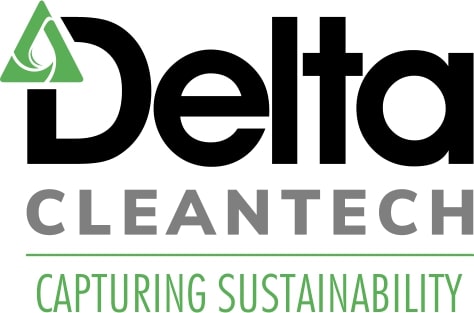
This technique helps recover mono- and tri-ethylene glycol for natural gas dehydration, cooling, and anti-freeze processes.
With offices in Calgary, Houston, London, Abu Dhabi, Beijing, and Sydney, Delta CleanTech just started an expansion project to increase sales.
This expansion occurred due to the introduction of new carbon capture projects over the last year.
Investors appreciate Delta CleanTech shares because the company is based in a country with aggressive climate change legislation and ambitions.
Given Delta’s involvement in numerous significant carbon capture projects across the globe during the past 15 years, it is well recognized as a leader in the carbon capturing sector.
Schlumberger Limited (NYSE: SLB)
Founded almost a hundred years ago, in 1926, Schlumberger Limited is a technology company that provides services to the energy industry, with clients being major oil and gas producers worldwide.
In addition to delivering decarbonization technologies, it has over 80 years of experience mapping, measuring, and modeling underground rock formations.
Since 2005, Schlumberger has been developing carbon capture projects and is involved in more than 60 global carbon storage projects.
Schlumberger New Energy, a new energy division of the corporation, looks for new business opportunities in the developing geothermal, lithium, energy storage, carbon capture, hydrogen, and geo-energy industries for building heating and cooling.
Additionally, the company offers equipment for artificial lift manufacturing and optimization services.
It provides packers, safety valves, sand control technologies, and various intelligent well completions equipment.
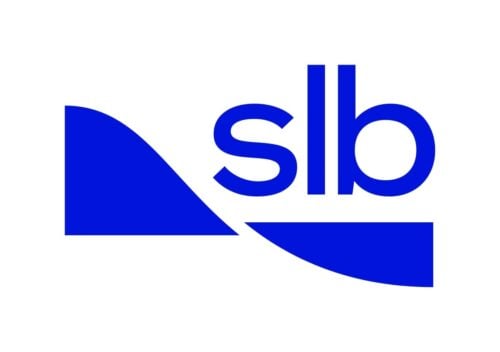
Also included are wellheads, subsea trees, manifolds and flowline connectors, control systems, connectors, and services under the OneSubsea umbrella of integrated solutions.
Frankly, SLB is in a position to take advantage of the role big oil and gas energy producers have in the transition into green energy.
As such, this makes it an excellent carbon capture stock option.
Schlumberger generated a revenue of $29.09 billion in 2022, and experts estimate that this will rise to $32.7 billion in 2023, keeping with their year-over-year revenue growth of 22.51%.
Experts also value the enterprise at $91.03 billion with a market cap of $80.7 billion.
It records a dividend yield of 1.76%, making annual payouts of $1.00 at a ratio of 29.82%.
Brookfield Renewable Partners L.P. (NYSE: BEP)
One of the biggest North American wind energy producers, Brookfield Renewable Partners L.P., was established in 2011 and has its headquarters in Bermuda.
Today, it is the most extensive clean energy infrastructure provider in the world, providing various services and spreading sustainable energy around the globe.
It owns various renewable energy production plants, mainly in North America, Europe, India, and China.
The business also uses hydropower, wind, solar, distributed generation, pumped storage, cogeneration, and biomass sources to produce electricity.
About 21,000 megawatts of installed capacity make up its portfolio.

In May 2016, the business changed its name from Brookfield Renewable Energy Partners L.P. to Brookfield Renewable Partners L.P.
The firm has successfully built coal-to-gas and biomass power plants, which have proven to be hugely profitable.
Last year, Brookfield generated a revenue of $4.71 billion and is on track to make that figure north of $5.57 billion by 2024.
The company is valued at $53.38 billion with a market cap of $12.53 billion and a gross profit margin of 69.56%.
BEP is also a dividend stock recording two consistent years of dividend growth at a yield of 4.87% and an annual payout of $1.35.
Carbon Streaming Corporation (OTCQB: OFSTF)
Last but definitely not least on our list is Carbon Streaming Corporation.
Carbon Streaming Corporation, formerly Mexivada Mining Corp., is a renewable energy firm headquartered in Toronto and was founded in 2004.
It functions as an investment entity that adheres to environmental, social, and governance principles and exposes investors to carbon credits.
The company’s primary focus is acquiring, managing, and expanding a diverse portfolio of investments in ventures and businesses that produce or are directly or indirectly involved in compliance or optional carbon credits.

To hasten the development of carbon offset projects, Carbon makes investments through carbon credit streaming agreements with project owners and developers.
This means that it allows companies to reduce their emissions by purchasing carbon credits for each ton of carbon removed.
Today, the company is valued at $12.23 million with a market cap of $84.51 million.
It has a gross profit margin of 21.51% but does not pay dividends.
As of January 2023, OFSTF was trading for roughly $1.82.
Are Carbon Capture Stocks a Good Investment?
Carbon capture stocks are stocks of companies involved in the development and implementation of carbon capture technologies.
These technologies are primarily used to reduce the amount of carbon dioxide emitted into the atmosphere, helping reduce climate change’s effects.
The demand for carbon capture tech is growing as governments worldwide increasingly focus on reducing carbon emissions.
And as a result, carbon capture technology companies are well-positioned to capitalize on this trend.
In other words, you can generate decent returns by investing in these companies.
Furthermore, the long-term potential for growth in this sector is significant, as the demand for carbon capture technologies is expected to continue increasing.
Overall, carbon capture stocks offer the potential for long-term growth while being relatively low-risk due to the fact that many companies involved in the industry have relatively large market caps.
This makes carbon capture companies good options for investors looking to diversify their portfolios and invest in a sector with long-term potential.
FAQs
Where Can You Make Carbon Capture Investments?
Investing in carbon capture stocks is one way to gain exposure to the carbon capture market. You can invest in most publicly traded carbon capture stocks with a regular brokerage account.
What Is The Most Effective Carbon Capture Technology?
IPDA is said to be the most effective carbon capture tech in the world right now. In a recent test, it was able to remove 99% of CO2 from air with a concentration of 400 parts per million (ppm).
What Are The Major Types Of Carbon Capture?
There are three types of carbon capture: post-combustion carbon capture, pre-combustion carbon capture, and oxy-fuel combustion systems.


 Tags:
Tags:










